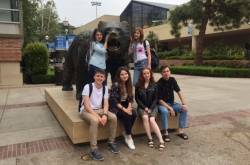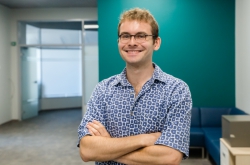Teachers from Latin American, African and Asian countries participated in the internship. Three ITMO teachers Klavdiya Bochenina, Mikhail Petrov, and Galina Romanova were the only participants from Russia. The internship took place at the MIT J-WEl laboratory, which conducts interdisciplinary research in the field of higher education. The program consisted of eight training modules: Learning Science, Course Structure, Problem-Solving, Entrepreneurship, Online/Digital Tools, Relevance, Inclusive Teaching, and Case Studies. The Case Studies module was dedicated to how to organize teamwork in different fields such as computer science, life sciences, and economics. The seminars were conducted by MIT supervisors, researchers, and professors. The participants had a very specific goal: to learn about the latest pedagogical techniques used at MIT and revise the courses taught at ITMO in accordance with these techniques.
The participants learned about modern tools allowing to enhance students’ productivity, for example, active learning. According to the internship organizers, students learn better when they learn actively, while those students who are taught using only traditional methods have a higher risk to fail their exams. What is also important, using this approach allows teachers to reduce the gap between the more and less successful students.

Active learning is a form of learning in which lectures are divided into small chunks, 10-15 minutes long each, and interspersed with discussions and practical tasks, shared Klavdiya Bochenina, an associate professor at ITMO University. The thing is that active learning increases attention span, the amount of concentrated time a person can spend on a task without becoming distracted.
Much attention was paid to additional interactive materials that can be used in the process of education, added Prof. Bochenina. For one, in MIT, many courses are taught in a “flipped classroom” format, which means that students learn a lot of the material online, for example by watching lectures, while engaging in discussions in the classroom with the teacher. According to MIT teachers, using this strategy allows to significantly improve students’ productivity.
Another medium of instruction actively used by MIT teachers is the project method. Students in a project method environment should be allowed to apply the skills and knowledge they have learned in the course to some problems they have to solve. For example, many exams at MIT are based not on the traditional question and answer scheme but are practical tasks that they have to solve using the knowledge they’ve acquired during the course. Isn’t it a perfect way to check if a student really mastered the subject?

Almost all methods the participants learned about at the internship can be implemented at ITMO, says Klavdiya Bochenina. However, every course has its own specifics which is important to take into account.
“I think that these formats can be very efficient in the field of computer science. We’re already using some of them in our courses, for example, the project method, when students use theoretical knowledge to solve real-life tasks. I used the skills I acquired during the internship at MIT to improve my course on machine learning technologies for Master’s students. I split the lecture into several smaller blocks interspersed with discussions and practical tasks,” commented Prof. Bochenina.
Apart from that, the internship also focused on how to unlock students’ entrepreneurial potential. The thing is, there are many biomedicine startups and companies at MIT, where students can do internships and work in laboratories. There is also the MIT Sloan School of Management which can boast the most popular MBA program in the world. This university is a hub for renowned researchers and entrepreneurs, who are actively involved in the educational process. They split students into teams and work with them on some projects.

“Our lecturers emphasized that anyone can learn to be an entrepreneur. There is no such thing as an entrepreneurial streak. Such courses allow you to acquire good management skills which will definitely come in handy in your future career,” noted Prof. Bochenina.
The participants also had the chance to visit the university’s numerous laboratories, including the one specializing in virtual reality technologies in education. The teachers were demonstrated a VR application which can be used to study the fundamental laws of physics. According to the laboratory experts, developing a VR educational system doesn’t take long, but some special equipment is needed to implement such technology on a mass scale.

“We also had a tour of all MIT buildings. Most of all I liked that MIT has a very open environment: you are allowed to go inside almost every room you like, watch around, talk to researchers. Apart from that, the Art&Science concept is very popular there, and sometimes I felt like I was visiting some contemporary art exhibition. For example, there was an extraordinary exhibition of colorful pictures taken by a microscope,” shared Prof. Bochenina.
When the internship came to an end, the participants had time to talk about their impressions and present the results of their work. Galina Romanova, an associate professor at ITMO, a coordinator of the course in optical systems design taught at ITMO, also took part in the internship.
“During the internship, I revised the structure of the course I teach at ITMO in order to make it more logical and consistent, came up with some new testing formats, and added more “active learning” elements into the course. But I would also like to implement some other techniques I learned about at the internship in my future work,” commented Prof. Romanova.




